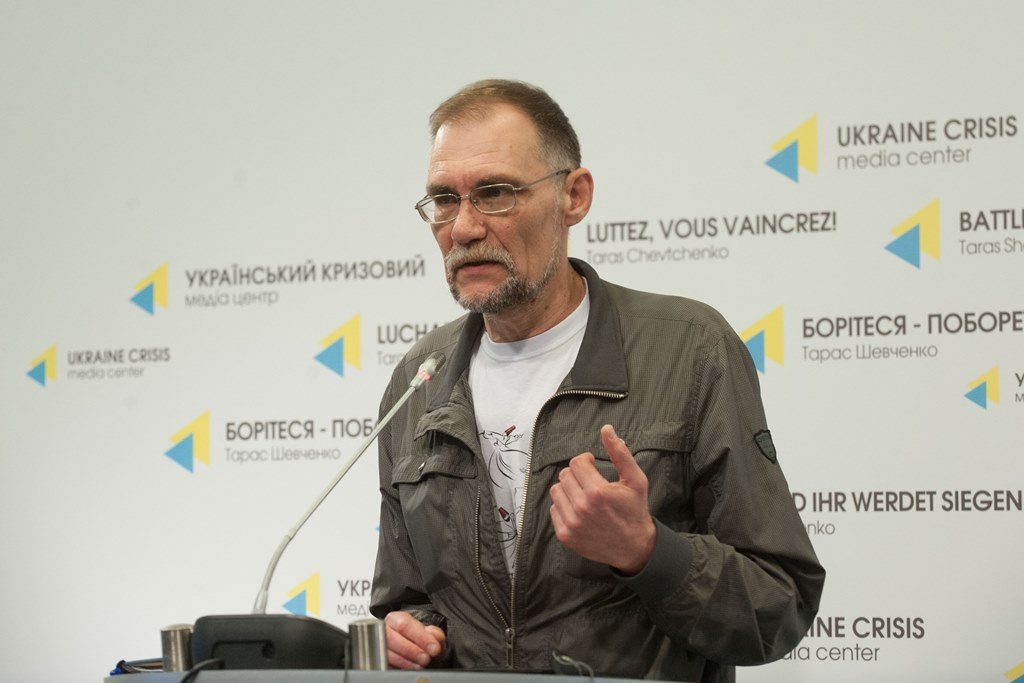There is neither access to cultural monuments and sites in occupied Crimea and Donbas, nor reliable information on their current state. Their conservation can only be ensured through international mechanisms say experts.
Kyiv, June 13, 2016. Ukraine can protect its cultural heritage on the temporarily occupied territories by using the mechanism provided by the Statute of UNESCO and by ICOMOS (International Council on Monuments and Sites) – by means of an international monitoring mission. To achieve this respective, monuments or sites need to be designated as “in danger” on the List of World Heritage. “It would allow UNESCO to organize international monitoring missions that would track the condition of the monument or site in question. As UNECO is an international organization it would also lead to certain actions at international level as well,” explained Tymur Bobrovsky, member of the Ukrainian Committee at the International Council on Monuments and Sites, during a press briefing at Ukraine Crisis Media Center. According to Bobrovsky, it is the only way to protect such monuments and sites, such as Crimea’s Chersonese and the Palace of Crimean Khans in Bakhchysarai.
He added that the Ukrainian Committee of ICOMOS addressed the Ministry of Culture of Ukraine last year asking to submit respective appeal, but they never did. “We now have a chance to make it at the end of June, when the next session of the World Heritage Center will take place,” noted Bobrovsky. He is of the opinion that one needs to start with Chersonese, then submit for consideration the nomination dossier of the Khan’s Palace and immediately ask to put it on the list of monuments in danger.
“As per the statistics there are around 70 museums left on the temporarily occupied territories of Crimea and Donbas, tentatively 35 in each area. However, according to our latest count there are about 100 museums. Around 1,2 million cultural monuments and sites found themselves beyond the area of control of Ukrainian authorities,” said Vasyl Rozhko, Head of the Ministry of Culture Department on museum management and cultural valuables. In Crimea there are around 10,000 cultural monuments and sites. “Out of this number over one thousand cultural monuments and sites are of local value and over 60 of national value have been included into the state registry,” noted Bobrovsky. Experts noted that for a long time, the registration of valuables was conducted by each museum individually, only over the past couple years has an e-database been available. Thus, there is still no exact data as to the list of cultural valuables that happened to be on the temporarily occupied territory.
Both Crimea and the occupied part of Donbas are completely closed to Ukrainian experts, as well as Ukrainian and international media. That is why the only information source on the state of the cultural monuments and sites is the pre-filtered information from Russian media and information obtained through personal contacts. “Our largest concerns are with the state of the monuments and sites recognized by Ukraine and by the international community such as the World Heritage Sites,” noted Bobrovsky. These are Chersonese and its chora as well as a series of monuments and sites to be included in the World Heritage list including the Khan Palace in Bakhchysarai, cave cities of Eski-Kermen and Mangup, and Genoese Fortress in Sudak and the XIX-century observatory near Simferopol. Bobrovsky said that last year one of the towers of the Genoese fortress collapsed. The Khan Palace needs serious renovation. “Just two weeks ago the Crimean Tatar community of Bakhchysarai wrote an open appeal to the Minister of Culture of the Russian Federation notifying the authorities that the palace’s roof is leaking and the site is quickly falling into critical condition,” he emphasized. The situation with the palace has a certain political implication as it is the symbol of the spirit and unity of Crimean Tatars, while Russian authorities appear to have little care or concern for their well-being.
A most complicated situation is formed around Chersonese, there was an attempt to pass management of the natural reserve to the religious head of St. Volodymyr Church in Chersonese. “The team of the site held strikes twice under occupation and as a result the site fought back its status quo. […] However according to the reports we received last week pressure on the natural reserve management restarted and its current director was dismissed,” explained Bobrovsky. “As the orthodox church has big plans as to construction of the ‘patriotic orthodox cultural center’ right at the border with Chersonese we realize what threat it may be carrying for the site.”
An alarming situation is also occurring at the Kerch peninsula: large-scale bridge construction is underway there, however work is conducted from the Russian side only – on the Taman peninsula. “As a result, certain number of archeological items have already lost but it is impossible to prove. To prove it we would need to document it, however, we do not have access that area. Only the monitoring mission would allow us to make these steps,” the expert emphasized.






